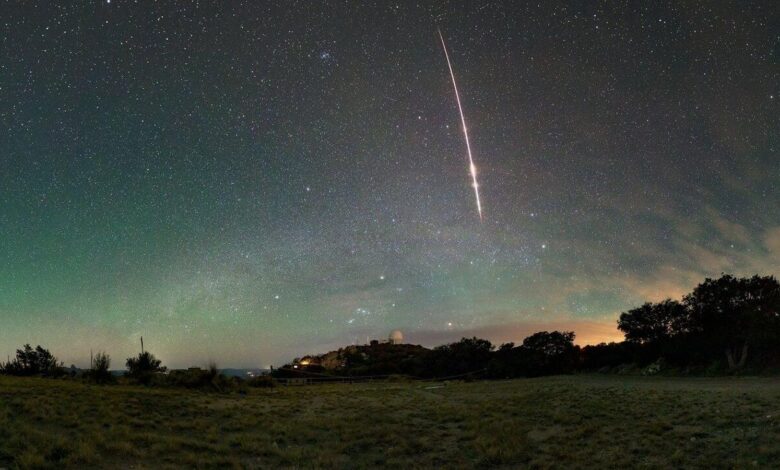Rare Meteor Shower To Peak This Weekend, NASA Says

📝 usncan Note: Rare Meteor Shower To Peak This Weekend, NASA Says
Disclaimer: This content has been prepared based on currently trending topics to increase your awareness.
A fireball streaks across the morning sky above NSF Kitt Peak National Observatory (KPNO), a Program of NSF NOIRLab funded by the U.S. National Science Foundation.
KPNO/NOIRLab/NSF/AURA/J. Dai
A rare display of “shooting stars” may grace the night sky this weekend as a newly found meteor shower suddenly peaks.
The Chi Cygnids meteor shower occurs in mid-September every year, but only every five years does it produce noticeable “shooting stars.” After significant activity in 2010, 2015 and 2020, 2025 looks set to feature an uptick in meteor rates — and there’s already early evidence for that.
Here’s everything you need to know about the Chi Cygnid meteor shower.
What Is The Chi Cygnids Meteor Shower 2025?
The Chi Cygnid meteor shower is typically a weak display each September whose “shooting stars” appear to come from a radiant point close to a star called Chi Cygni in the constellation of Cygnus. Cygnus forms part of the Summer Triangle asterism, which is in the western sky after dark in mid-September as seen from the Northern Hemisphere. Chi Cygni is about 500 light-years from the solar system.
SETI Institute and NASA Ames Research Center scientists Peter Jenniskens and colleagues detected meteors from the Chi Cygnids meteor shower in late August. “Based on past returns, the shower is expected to increase in activity gradually until a peak around Sept. 14, followed by a rapid decline,” reports SETI. It’s believed that the five-year periodicity is caused by the meteoroids being trapped in a resonance with Jupiter.
When Is The Chi Cygnids Meteor Shower?
This meteor shower may peak around Saturday, Sept. 13, through Monday, Sept. 15, 2025, though the peak rates per hour are not known. However, since the peak is hit-and-miss most years, there is some disagreement, with the American Meteor Society stating that the Chi Cygnids peak on Tuesday, Sept. 16. Observers should watch across all these dates (if skies are clear, they’ll be among the best nights of the month for stargazing).
Why To Watch The Chi Cygnids Meteor Shower
Aside from the rarity of significant activity, the Chi Cygnids are known for how slow-moving their “shooting stars” are, which makes them easier (and arguably more enjoyable) to see than some fast-moving displays. The Chi Cygnids have a speed of around 15 km/sec as they strike Earth’s atmosphere. For context, August’s famous Perseids move at 59 km/sec while October’s Orionids travel at 41 km/sec.
How To See The Chi Cygnids Meteor Shower
The best way to see any meteor shower is to go stargazing for a few hours, preferably on a dark, moonless night sky away from light pollution (consult a light pollution map or travel to a Dark Sky Place). It’s the last quarter moon on Saturday (meaning the moon rises half-lit around midnight), which should make any faint Chi Cygnid meteors easier to spot in the late evening. However, a completely clear sky is also required.
Wishing you clear skies and wide eyes.




